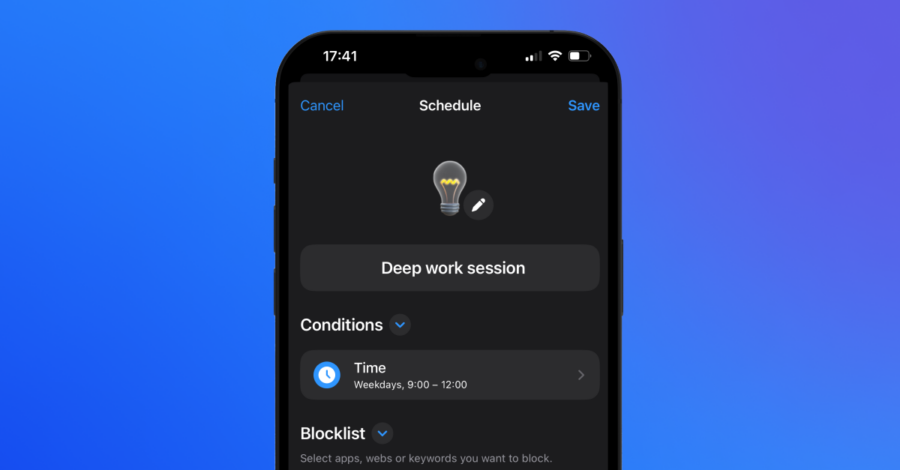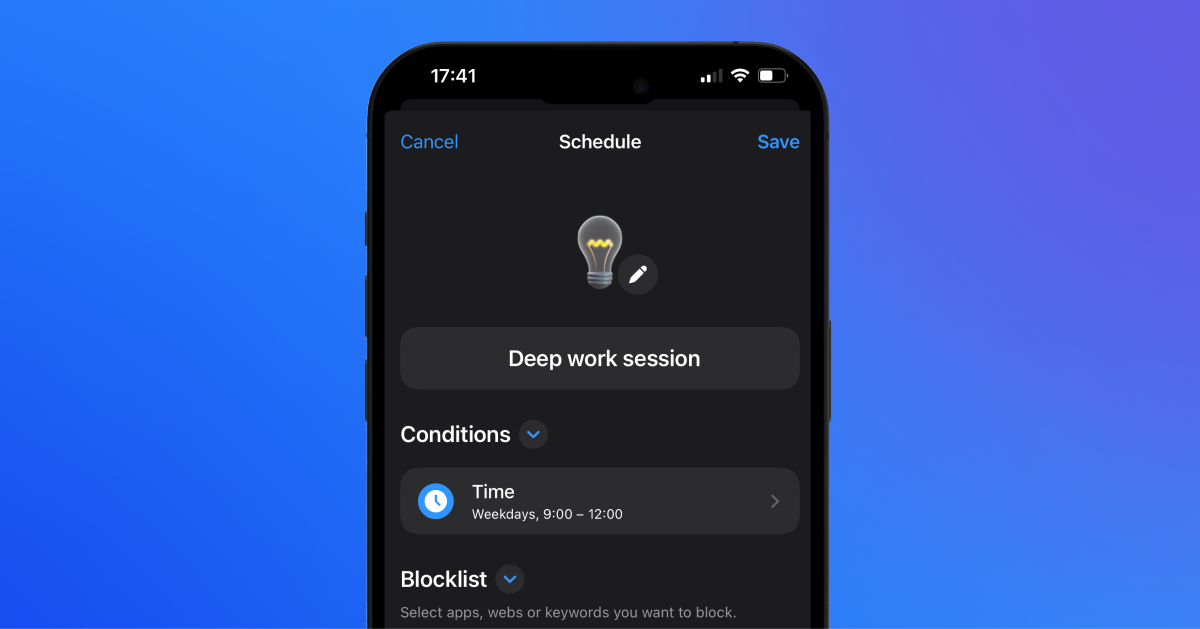• Productivity • Well-being •8 min read

Let’s be real—staying focused these days is a constant struggle. If you’re sick of feeling like you’re always busy but never actually getting anything done, this deep work guide is for you. Deep work isn’t about putting in more hours; it’s about making the hours you do spend count. When you learn to focus deeply, you’ll not only boost your productivity but also find more peace in your workday. Believe it or not, you can actually enjoy your work again—and we’re here to show you how.
Alright, so what exactly is deep work? Simply put, deep work is when you focus without any distractions on a task that really demands your full brainpower. It’s the opposite of shallow work—the kind of stuff that’s easy and doesn’t really move the needle, like answering emails or having back-and-forth chats. Deep work is where the magic happens. It’s the space where you make real progress on projects, solve complex problems, and produce your best work.
Why bother with deep work? The benefits are huge. First off, it helps you crank out higher-quality work in less time. Imagine being able to finish a big project in half the time because you were laser-focused the entire time. Not only do you become more productive, but deep work also leads to more satisfaction. When you see the results of uninterrupted focus, you feel like a rockstar. Plus, when your workday is filled with meaningful progress, you’ll leave the desk feeling accomplished rather than burned out.
Let’s break it down even further. Shallow work is all the little tasks that fill up your day but don’t require much thinking. We’re talking about answering emails, checking notifications, and attending meetings that could’ve been an email (we’ve all been there). It’s necessary but doesn’t move the needle much. Deep work, on the other hand, is all about tackling the big stuff—the tasks that take time, focus, and brainpower. It’s where you get into the flow, forget about everything else, and truly make progress on your goals.
Now, let’s talk about how to actually get into this magical deep work mode. It’s not as hard as you might think, but it does require a bit of strategy.
While you may be convinced of the value of deep work, figuring out how to incorporate it into your daily life can feel tricky. Luckily, Cal Newport (the expert on deep work) offers four different strategies you can choose from. Each of these methods comes with its own pros and cons, so it’s important to find the one that works best for you. Let’s break them down:
This is the most hardcore approach to deep work. Think of it as the deep work equivalent of going full monk mode. The idea is to eliminate or radically minimize shallow work and spend nearly all your working hours on one high-level focus. This means saying “no” to just about everything else. While this strategy offers the biggest rewards in terms of focus and output, it’s not realistic for most people who have a mix of responsibilities in their jobs. You also risk missing out on new opportunities by defaulting to “no” for anything outside your primary focus.
This strategy gives you the best of both worlds. You dedicate some parts of your time—whether it’s certain days, weeks, or even months—to deep work, while the rest of the time is open to everything else. It allows for both high focus and other valuable activities in your life. The catch? You need the flexibility to chunk your time in a way that makes sense for your schedule. For example, you could devote the fall and winter to deep work, and the spring and summer to more shallow tasks. It’s about finding a balance that works for you.
This method is ideal if your daily schedule is fairly predictable. If you can more or less anticipate how your day will unfold, it’s easy to block out several hours for deep work every day, creating a rhythm of focus. Think of it like setting a daily “deep work appointment” with yourself. By building this habit into your regular routine, you make deep work a consistent part of your day without too much thought. The rest of the time is reserved for shallow work and other tasks.
If you’re constantly on the move and your schedule changes all the time, the journalistic method might be for you. The idea here is to squeeze deep work into your day whenever you find pockets of time. It could be 30 minutes after a meeting gets canceled or an hour during a commute. However, this strategy is not for beginners—it requires serious vigilance with your time and the ability to quickly shift into deep work mode. If you’re just starting out, you might find this approach slightly chaotic.
Once you’ve chosen your deep work strategy, it’s time to build a routine around it.
Digital distractions are the biggest enemy of deep work. Whether it’s your phone buzzing, a new email popping up, or the lure of social media, these interruptions not only take away your focus in the moment but can disrupt your entire deep work session. Studies show it can take up to 23 minutes to refocus after an interruption, so every notification pulls you further from getting into the flow. To combat this, it’s crucial to minimize distractions by silencing notifications, logging out of social media, and closing your email during deep work blocks.
AppBlock can help you take control of these distractions by allowing you to create customized schedules that fit perfectly with your deep work sessions. You can block distracting apps and websites during specific hours, ensuring you stay focused. Plus, with Strict Mode, you can prevent yourself from turning off the block or uninstalling the app, making it even easier to stick to your distraction-free time. With AppBlock, you create a digital environment that fully supports your focus and productivity goals.

Shallow work still needs to get done, but the trick is to create limited space for it. Time block your work tasks and group them into similar activities. Specify certain times for shallow work so that it’s easier for you to stick to your deep work routine. For example, check your email only twice a day instead of every hour. The same goes for chatting with your team—set boundaries so that you’re not jumping in every time you get a notification. Constantly responding to messages can prevent you from getting into deep work mode because your attention is split across multiple activities. By creating these boundaries, you’ll protect your focus for the tasks that matter most.
Deep work is all about creating a routine that works for you and sticking to it. It’s not about perfection, but about making consistent progress. The more you embrace deep work, the more productive, focused, and satisfied you’ll feel. Remember to observe your progress, adjust what’s not working, and improve your routine as you go. Deep work is a process, and like any skill, you’ll get better at it the more you practice. So, set your goals, block out distractions, and dive in. You’ve got this!